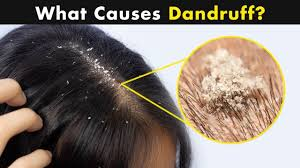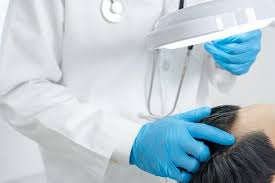Dandruff;
Dandruff is a scalp condition causing flakes, irritation, and itching, often due to fungal overgrowth, dry skin, or sensitivity.
Understanding Dandruff: Causes, Home Remedies, and Medical Treatments
Dandruff is a common condition that causes the skin on the scalp to flake. These flakes can be irritating and often lead to self-consciousness due to the visible presence of white or yellowish flakes in the hair or on clothing. Dandruff is not a serious medical condition, but it can be frustrating for those who experience it. This article will explore the causes of dandruff, effective home remedies, and medical treatments to help manage or eliminate this annoying condition.
What Causes Dandruff?
Dandruff occurs when the skin on the scalp sheds dead skin cells at an accelerated rate. While everyone experiences some level of scalp skin cell turnover, those with dandruff have a faster turnover rate, which leads to visible flakes. There are several factors that can contribute to dandruff development:
1. Malassezia Yeast Overgrowth
One of the most common causes of dandruff is the overgrowth of a fungus called Malassezia. This yeast-like organism is naturally found on the scalp of most adults. However, in some people, Malassezia can become overactive, irritating the scalp and causing the skin cells to shed prematurely. The reason for this overgrowth is not fully understood, but it may be linked to factors such as excess oil production or an imbalance in the natural flora of the scalp.
2. Seborrheic Dermatitis
Seborrheic dermatitis is a more severe form of dandruff that causes red, inflamed, and oily patches of skin on the scalp and other areas of the body. This condition is also thought to be linked to Malassezia overgrowth, and people with seborrheic dermatitis may experience more extensive flaking and scalp irritation.
3. Dry Skin
People with dry skin are more likely to develop dandruff, especially during colder months when the air is drier. Dry skin can lead to smaller, finer flakes that are less oily than those caused by other factors like seborrheic dermatitis.
4. Sensitivity to Hair Products
Some individuals may have an allergic reaction or sensitivity to certain hair care products, such as shampoos, conditioners, and styling products. This can cause scalp irritation, itching, and dandruff-like flakes.
5. Other Factors
Several other factors can contribute to dandruff, including:
- Hormonal changes: Fluctuations in hormones, especially during puberty or pregnancy, can trigger dandruff.
- Stress: High stress levels can trigger or worsen dandruff, possibly due to its effect on the immune system and the production of oils in the skin.
- Poor hygiene: Although dandruff is not caused by poor hygiene, not washing your hair regularly can lead to a buildup of oils, dead skin cells, and product residue, all of which may contribute to dandruff formation.
Home Remedies for Dandruff
Many people turn to natural remedies to help manage their dandruff. While these may not cure the condition entirely, they can help control symptoms and reduce the severity of flakes. Here are some popular home remedies for dandruff:
1. Tea Tree Oil
Tea tree oil is known for its antifungal and antibacterial properties. These properties may help reduce the Malassezia yeast responsible for dandruff. To use tea tree oil, mix a few drops with a carrier oil like coconut or olive oil and massage it into your scalp. Leave it on for about 15–30 minutes before washing your hair.
2. Aloe Vera
Aloe vera has soothing and anti-inflammatory properties that can calm scalp irritation. It also moisturizes the scalp, which may be beneficial for people with dry skin. Apply fresh aloe vera gel directly to the scalp and leave it for 20 minutes before rinsing it off.
3. Apple Cider Vinegar
Apple cider vinegar is a popular remedy due to its ability to balance the pH of the scalp and fight fungal overgrowth. Mix equal parts of apple cider vinegar and water, then massage it into your scalp. Allow it to sit for a few minutes before rinsing. The acidity of apple cider vinegar may also help break down the buildup of dead skin cells.
4. Coconut Oil
Coconut oil has moisturizing and antifungal properties, which may help soothe the scalp and reduce the flakes associated with dandruff. Apply warm coconut oil to your scalp and leave it on for at least 30 minutes or overnight before washing your hair.
5. Lemon Juice
The acidity of lemon juice can help balance the pH level of the scalp and reduce flaking. Massage fresh lemon juice into your scalp and leave it on for 5–10 minutes before rinsing. This may help control dandruff caused by dryness or fungal overgrowth.
6. Baking Soda
Baking soda can help exfoliate the scalp, removing dead skin cells and potentially reducing dandruff. Gently massage a small amount of baking soda into your wet scalp, then rinse it off thoroughly. Be cautious, however, as excessive use of baking soda can dry out the scalp.
Medical Treatments for Dandruff
While home remedies may provide some relief, many individuals find that they need more robust treatments to manage their dandruff. Fortunately, there are several over-the-counter and prescription treatments available.
1. Anti-Dandruff Shampoos
Anti-dandruff shampoos are often the first line of defense against dandruff. These shampoos contain active ingredients that help control fungal growth, reduce scalp inflammation, and regulate oil production. Some of the most common ingredients in anti-dandruff shampoos include:
- Zinc pyrithione: This ingredient helps reduce the growth of Malassezia.
- Ketoconazole: A potent antifungal agent that works to combat fungal infections on the scalp.
- Selenium sulfide: Helps control scalp fungus and can reduce itching.
- Coal tar: Slows down the production of skin cells on the scalp, helping reduce flaking.
- Salicylic acid: Helps exfoliate the scalp and remove dead skin cells.
To use these shampoos, follow the directions on the label, as some may require you to leave the product on your scalp for a few minutes before rinsing.
2. Topical Steroid Creams
In some cases, dandruff may be accompanied by more severe scalp inflammation. If this is the case, a doctor may prescribe a topical corticosteroid cream to reduce irritation and inflammation. These creams can help calm the scalp and provide relief from itching and redness.
3. Oral Antifungals
For individuals with persistent dandruff or seborrheic dermatitis, oral antifungal medications may be prescribed. These medications target fungal overgrowth from the inside out, helping to restore balance to the scalp's microbiome.
4. Light Therapy
In some instances, light therapy (also known as phototherapy) can be used to treat seborrheic dermatitis or severe dandruff. This treatment uses ultraviolet (UV) light to reduce the growth of Malassezia and improve scalp health.
When to See a Doctor
Most cases of dandruff can be managed with home remedies and over-the-counter treatments. However, if dandruff is severe, persistent, or accompanied by symptoms such as hair loss, swelling, or a rash, it’s important to consult a healthcare professional. A dermatologist can help determine the underlying cause of the dandruff and recommend appropriate treatment options.
Conclusion
Dandruff is a common and often manageable condition that can be caused by a variety of factors, including fungal overgrowth, dry skin, and product sensitivity. While it may not be entirely preventable, there are many effective home remedies and medical treatments available to help reduce symptoms and control the condition. Whether you choose to try natural remedies or opt for medical treatments, it’s important to remain consistent and patient to see lasting results. With the right care, dandruff can be effectively managed, allowing you to feel confident in your hair and scalp health.
href="https://blogger.https://slickquiver.com/kpy542ijrm?key=374ad52b1da5daf69e0cea67de52cbfc.com/img/b/R29vZ2xl/AVvXsEgKV2prDBa73UqUik9uJmoLVnjm2OM56Tiy4JFZWt310_szcSdW2jM2Hu6q14zde1w43XcoGFwW49eqfnjxXcwZUVat6XCDPp8IgYggWK28PfBuVJy67Unjl7Eo_zra8RbuneAxHNiFe7Z1828pbXervzrygoVzkJlhATac0whVzMEyEAbdBtSsAPi9HRjz/s355/download.jpg" style="margin-left: 1em; margin-right: 1em;" target="_blank">




